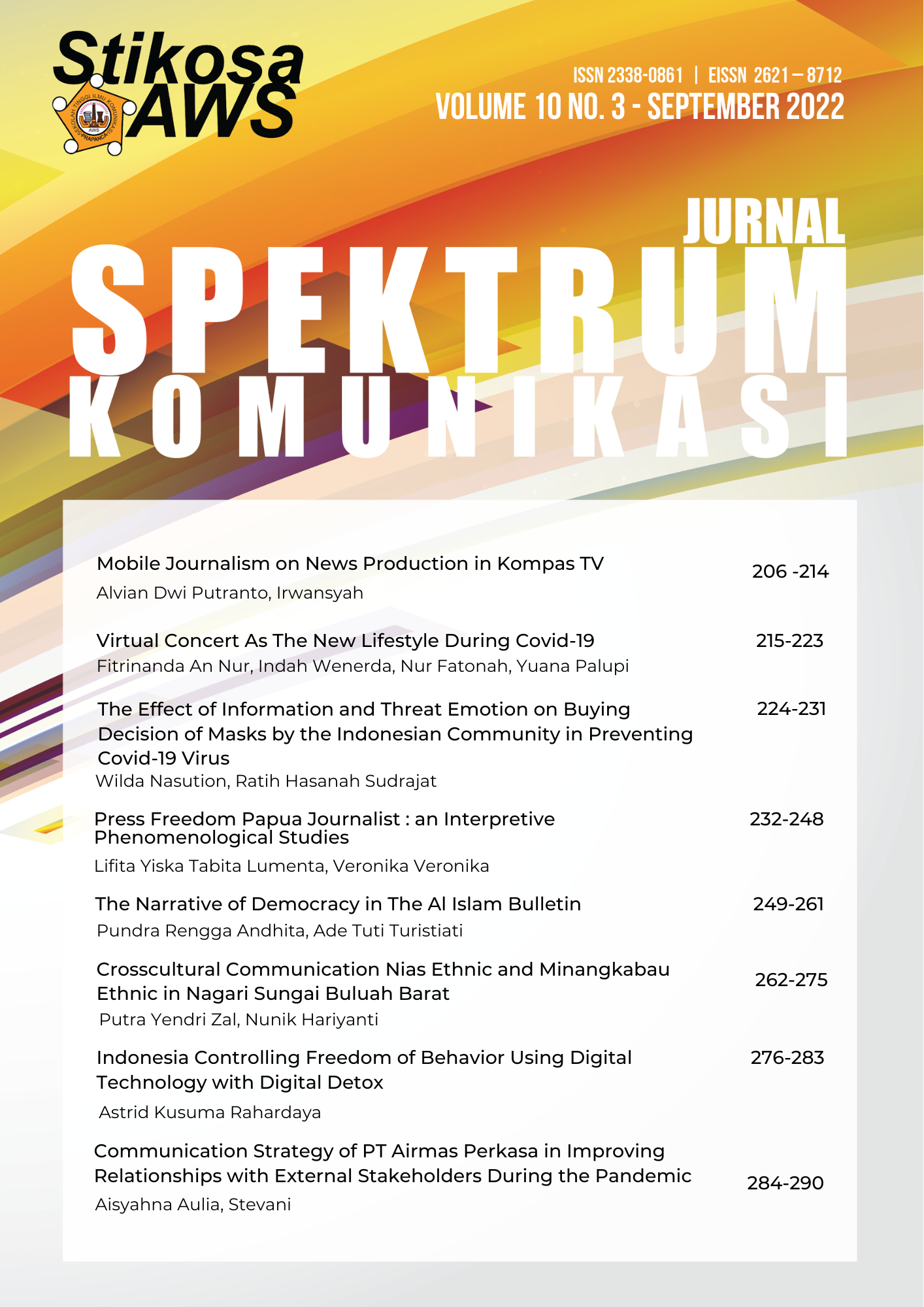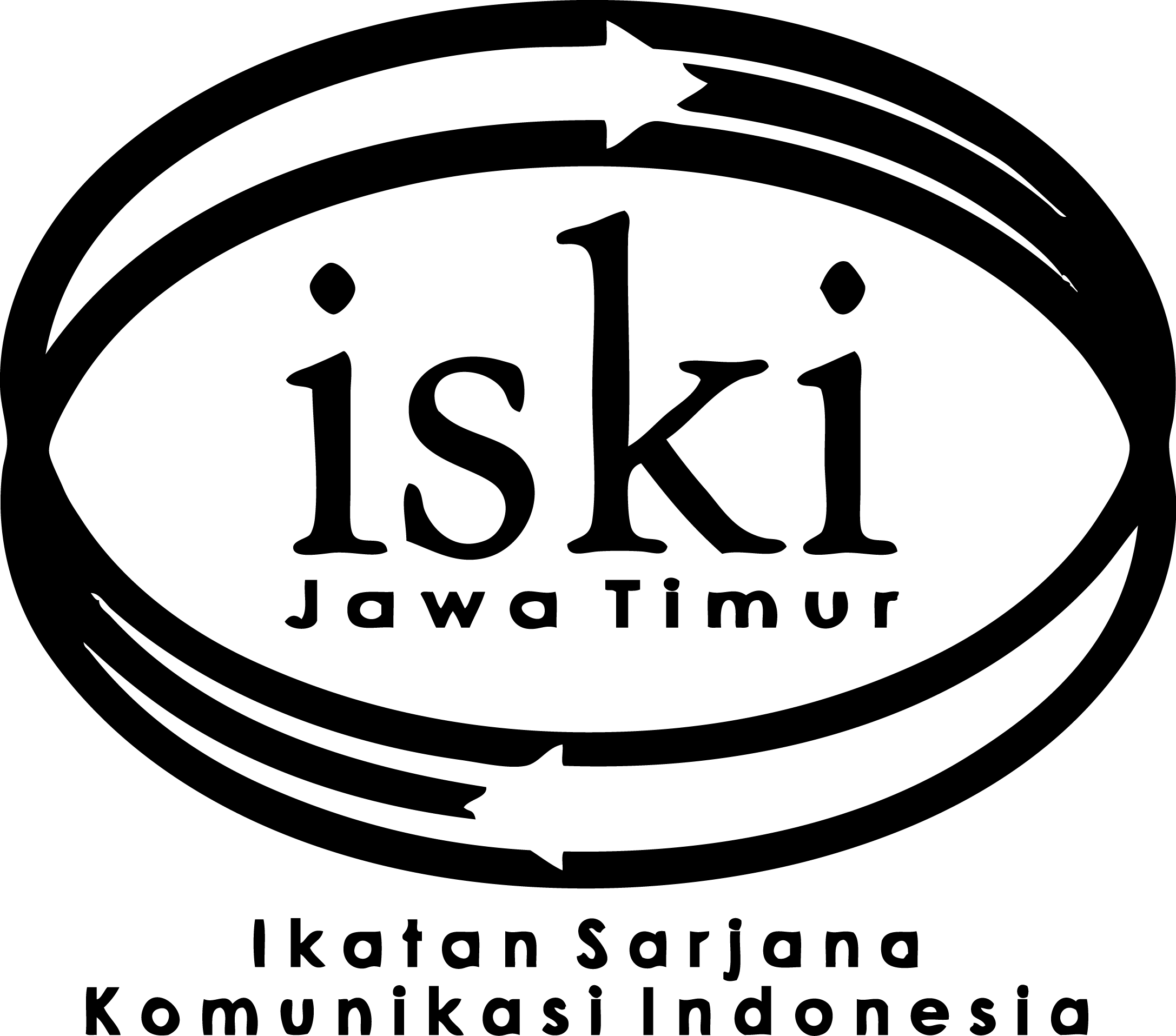The Effect of Information and Threat Emotion on Buying Decision of Masks by the Indonesian Community in Preventing Covid-19 Virus
DOI:
https://doi.org/10.37826/spektrum.v10i3.270Keywords:
information, threat emotion, buying decision, covid-19Abstract
In making buying decisions, consumers are always driven by needs or motivation. Many previous studies have proven the role of various forms of motivation in influencing the judgment that leads to buying decisions. One form of motivation is the threat emotion. Not much research has been done on how emotions influence consumer decision making. Fear turns out to be an internal pressure for consumers and urges them to reduce tension by making decisions. Using data obtained from 400 respondents, this study aims to measure the influence of information and threat emotion on the decision to buy masks by the Indonesian people to prevent the Covid-19 virus. The results show the significant influence of information and threat emotion on their purchase decisions because they believe that masks are the answer to prevent and reduce their fear of the Covid-19 virus.
References
Anton, M. M. (1990). Kamus Besar Bahasa Indonesia. Jakarta: Balai Pustaka.
Armstrong, G., Kotler, P., & He, Z. (2005). Marketing: an introduction.
BBC. (2020). Virus corona: Panic buying terjadi di enam kota besar, “ini bukti tidak ada kebijakan yang solid di seluruh kementerian dan pemda.” https://www.bbc.com/indonesia/indonesia-51739946
Bobobox.co.id. (2020). Mencegah PenuIaran Virus Corona dengan Sarung Tangan dan Masker. https://www.bobobox.co.id/blog/mencegah-penularan-virus-corona/
Bungin, B., & Kriyanto, R. (2006). Teknik Praktis Riset Komunikasi. Jakarta: Kencana Prenada Media Group.
Bungin, B., & Kriyanto, R. (2006). Teknik Praktis Riset Komunikasi. Jakarta: Kencana Prenada Media Group.
Cangara, H. (2010). Pengantar ilmu komunikasi Rajawali pers.
Chen, C. Y., Lee, L., & Yap, A. J. (2017). Control Deprivation Motivates Acquisition of Utilitarian Products. 1–69.
Damiati, dkk. (2017). Perilaku Konsumen. Depok: PT RajaGrafindo
Darmawan, D. (2013). Metode penelitian kuantitatif.
Dharmesta, S. Basu dan Tani Handoko, 2000. Manajemen Pemasaran Analisis Perilaku Konsumen, Yogyakarta: Edisi Pertama, BPFE.
Ding, H. (2009). Rhetorics of alternative media in an emerging epidemic: SARS, censorship, and extra-institutional risk communication. Technical Communication Quarterly, 18(4), 327–350. https://doi.org/10.1080/10572250903149548
Effendy, O. U. (1992). Spektrum komunikasi. Mandar Maju.
Effendy, O. U. (2009). Komunikasi teori dan praktek. Bandung: PT Remaja Rosdakarya.
Fearn-Banks, K. (1996). Crisis communication theory and ten businesses hit by the news for making crises. Global business trends, 55-62.
Ferrinadewi, E. (2007). Pengaruh Threat Emotion Konsumen Dan Brand Trust Pada Keputusan PembeIian Produk Susu AnIene Di Surabaya. JurnaI Kewirausahaan, 1(2), 1–8.
Kotler, Philip. 2000. Manajemen Pemasaran. Jakarta: Prenhallindo.
Kriyantono, R. (2015). Public relations, issue & crisis management. Jakarta: Prenada Media.
Kumparan. (2020). Di BaIik Fenomena Panic Buying: Sejarah, EkspIanasi, dan Antipasi. https://kumparan.com/kumparannews/di-balik-fenomena-panic-buying-sejarah-eksplanasi-dan-antisipasi-1t2kIEvWnz3
Kurniawan, Herik. (2020). Strengthening IJTI Organization through Whatsapp Chat Group Communication During the Covid-19 Pandemic. Jurnal Spektrum Komunikasi, 8(2), 201 - 216. https://doi.org/10.37826/spektrum.v8i2.118
Latan, H., & Temalagi, S. (2013). Analisis multivariate teknik dan aplikasi menggunakan program IBM SPSS 20.0. Bandung: Alfabeta.
Leon, G. Schiffman dan Lazar L Kanuk. 2008. Perilaku Konsumen.
Liliweri, A., & Antarbudaya, D. D. K. (2009). Pustaka Pelajar Y. Dasar-Dasar Komunikasi Kesehatan. Yogyakarta.: Pustaka Pelajar, 78-85.
Moh Abdul Mukhyi dan Iman Hadi Saputro. (1995). Pengantar Manajemen Umum. Jakarta. Gunadarma.
Mowen, J. C dan Michael Minor. 2002. Perilaku Konsumen.
Mulyana, D. (2000). Ilmu Komunikasi, Pengantar. Bandung: Remaja Rosadakarya.
Nida, F. L. K. (2014). Persuasi DaIam Media Komunikasi Massa. JurnaI Komunikasi Penyiaran IsIam, 2(2), 77-95.
Novianti, R. (2014). Pengaruh Threat Emotion Konsumen Dan Brand Trust Terhadap Keputusan PembeIian Produk Gadget. JurnaI Economia, 10(2), 194–200. https://doi.org/10.21831/economia.v10i2.7545
Nurudin, N. (2007). Pengantar Komunikasi Massa. RajaGrafindo Persada.
Priyatno, D. (2008). Mandiri beIajar SPSS. Yogyakarta: Mediakom.
Robbins, S. P., & Timothy, A. (2008). Judge. Organizational behavior, 12th ed. Jakarta: Salemba Empat.
Shou, B., Xiong, H., & Shen, Z. M. (2011). Consumer Panic Buying and Quota Policy under Supply Disruptions. Working Paper, University, 1–29.
Singarimbun M dan Effendi S. (2008). Metode peneIitian survei. Effendi S, editor. Jakarta (ID): LP3ES.
Siregar, A., & Pasaribu, R. (2004). Bagaimana Mengelola Media Korporasi–Organisasi Cetakan V.
Sugiyono. (2014). Memahami Penelitian Kualitatif. Bandung: Alfabeta.
Sujarweni, V. W. (2015). Metodologi penelitian: Lengkap, praktis, dan mudah dipahami. Yogyakarta: Pustakabarupress.
Sumbar.antaranews.com. (2020). Media Harus Menjadi Sumber Informasi Terpercaya Di Tengah Wabah Virus Corona. https://sumbar.antaranews.com/berita/341586/media-harus-menjadi-sumber-informasi-terpercaya-di-tengah-wabah-corona
Wardhani, V. (2020). Gejala Sosial Panic Buying, Ini Penyebab dan Cara Mengatasinya. https://www.merdeka.com/jatim/gejala-sosial-panic-buying-apa-penyebabnya-dan-bagaimana-mengatasinya-kln.html

























